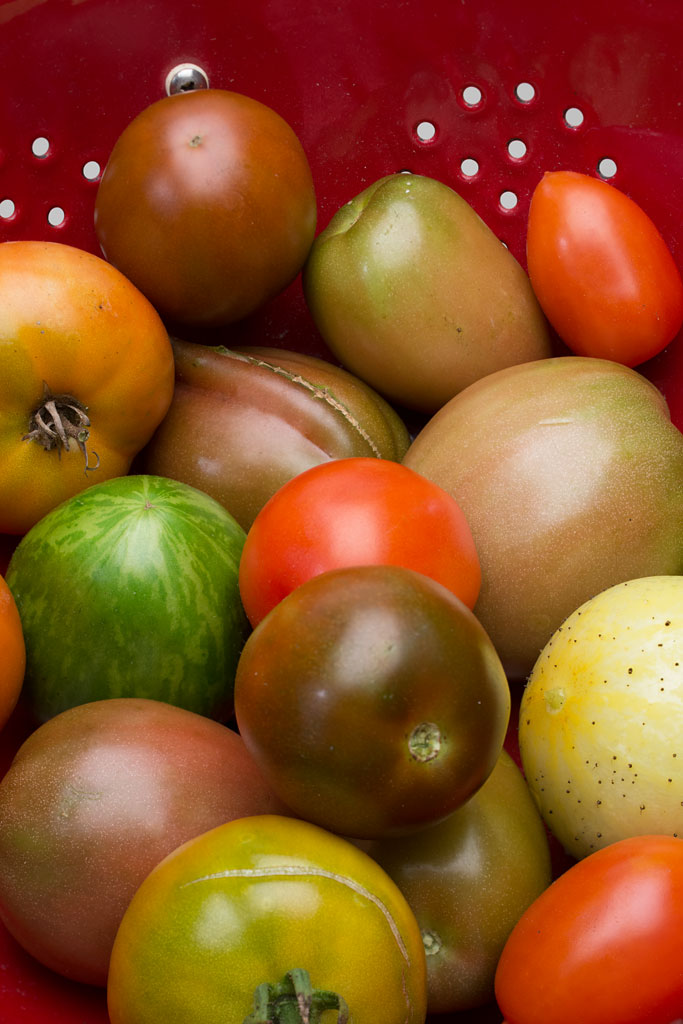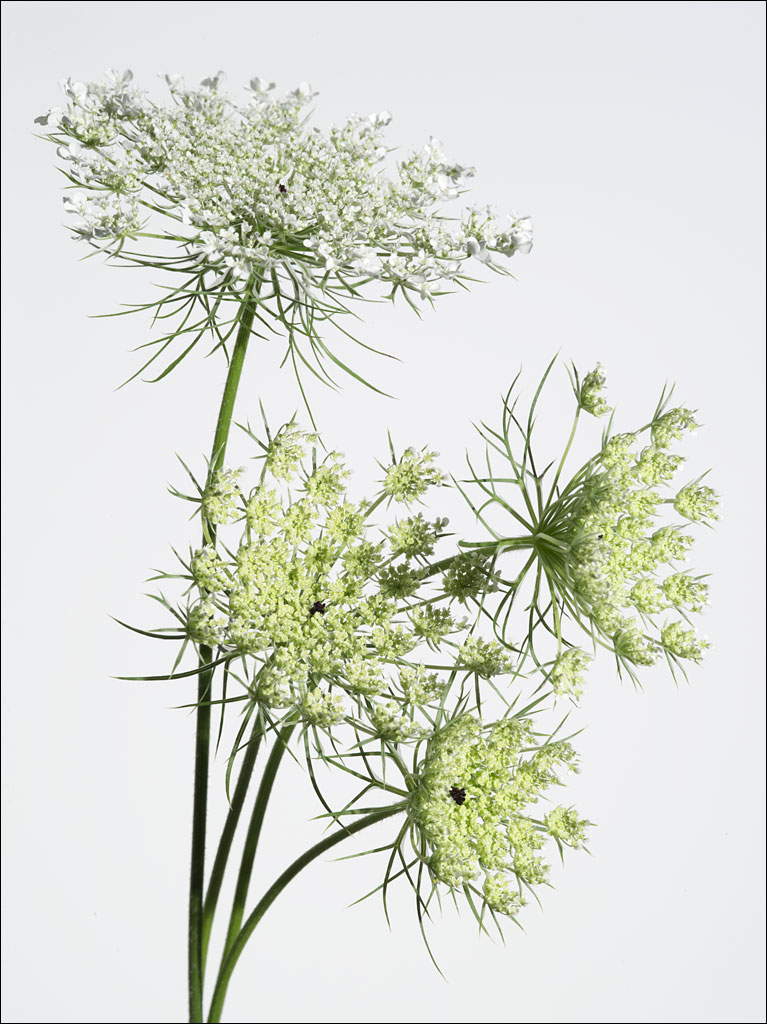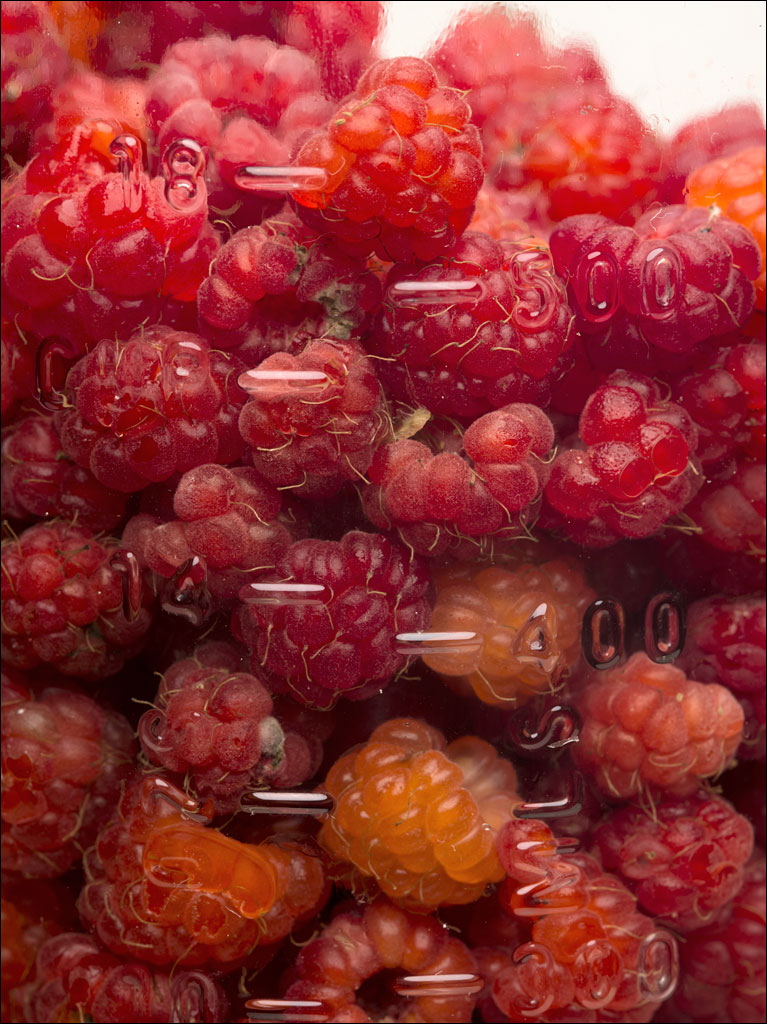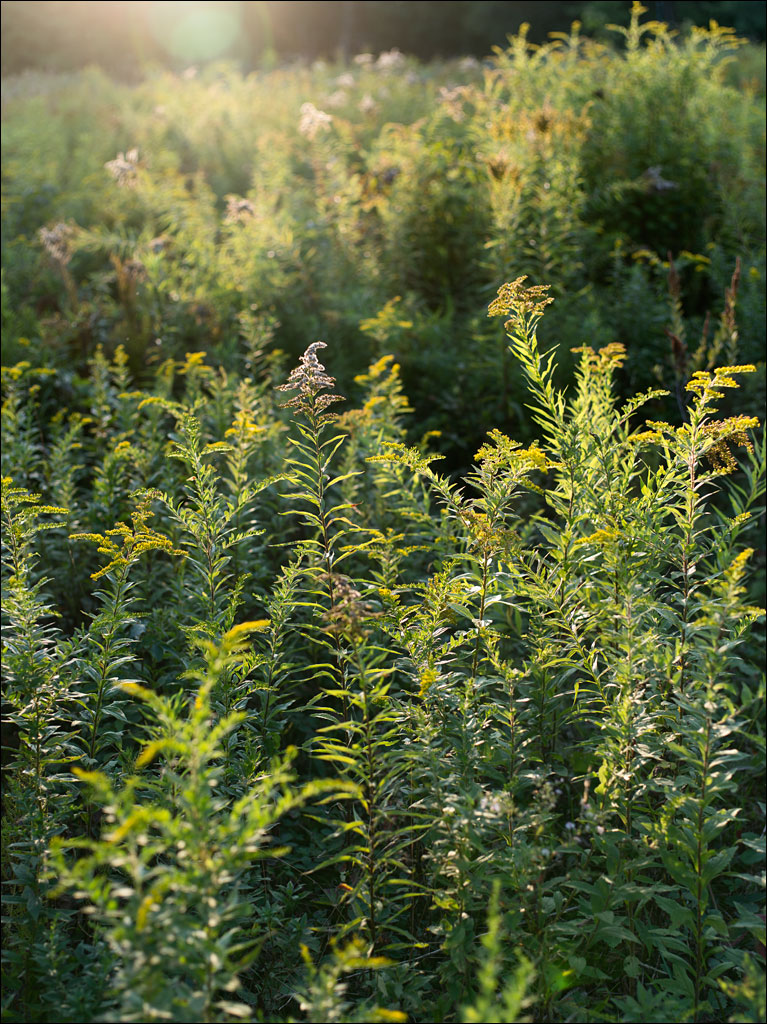 Golden rod in our field at sunset. We use this plant for tea and bread. Click on the image for a larger view.
Golden rod in our field at sunset. We use this plant for tea and bread. Click on the image for a larger view.
Tag Archives: Kitchen Garden
End of the Blackberry Harvest
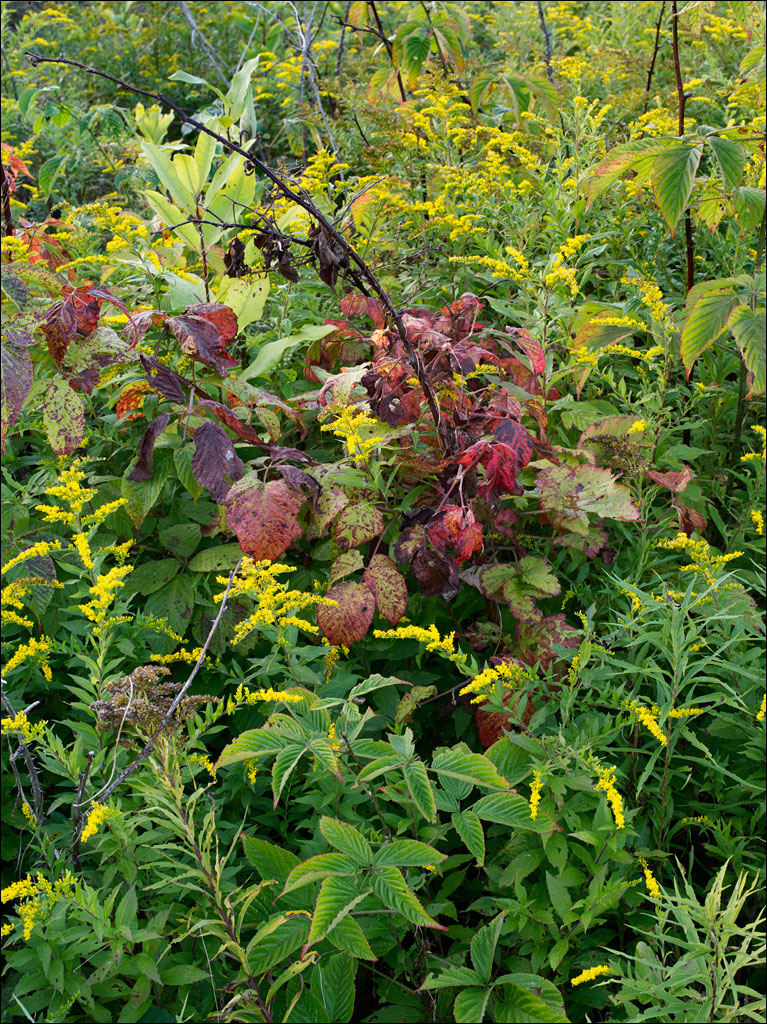 Our blackberry harvest is drawing to a close. We had a great crop, which we mostly froze to use over the winter. We kept some fresh for our breakfast, though. The blackberry canes in our field are starting to turn color. They tend to be the first signals of the ending summer, even while our golden rod remain in bloom. Click on the image for a larger view.
Our blackberry harvest is drawing to a close. We had a great crop, which we mostly froze to use over the winter. We kept some fresh for our breakfast, though. The blackberry canes in our field are starting to turn color. They tend to be the first signals of the ending summer, even while our golden rod remain in bloom. Click on the image for a larger view.
Vegetable Harvest
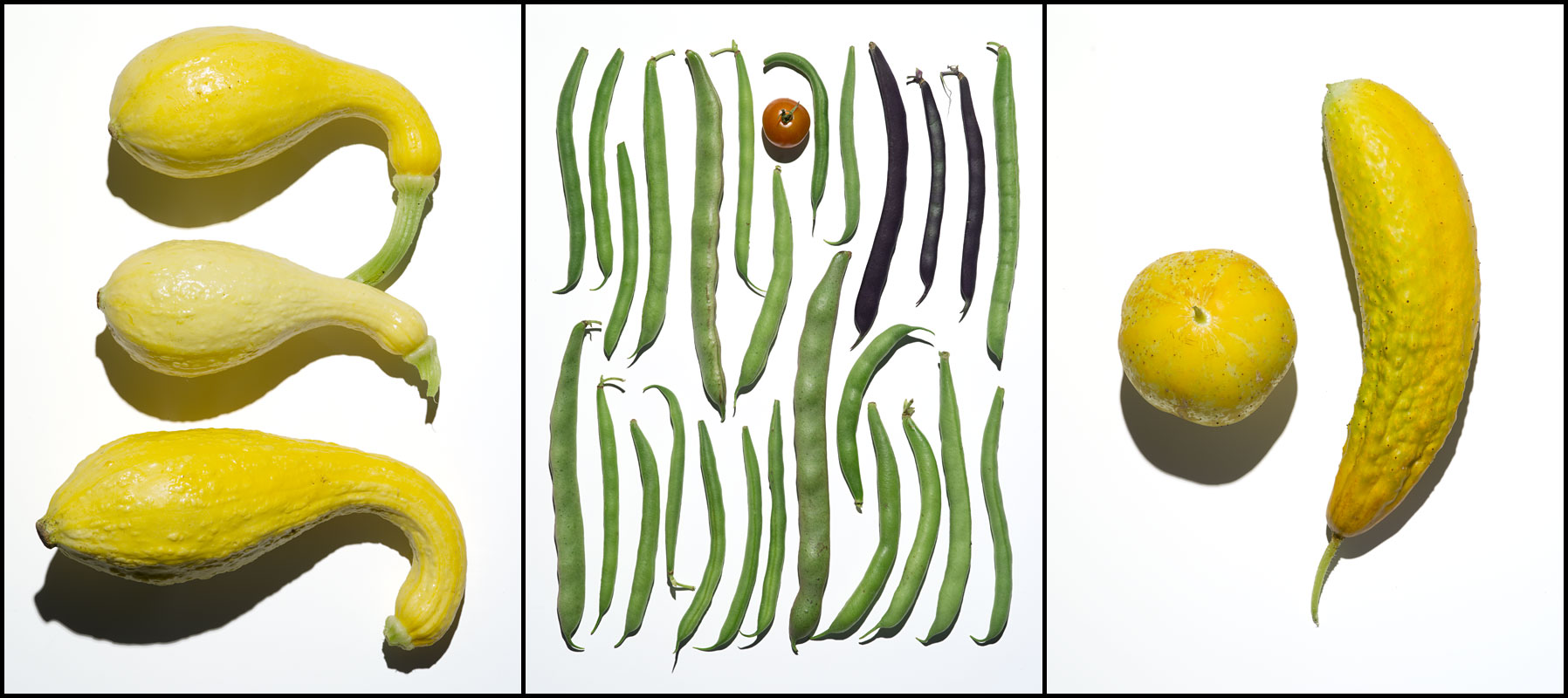 Along with tomatoes and blackberries, we are getting other veggies. On the left are Early Summer Yellow Crookneck Squash. Our beans this year are Kentucky Wonder, the large green pole beans, Provider, the mid-sized bush beans, Masai, the small bush beans, and Blue Coco, the purple pole beans. The small tomato in the picture is Gardener’s Delight. And last are our cucumbers. The round variety is Lemon cucumber and the other is de Bourbonne Cornichon pickling cucumber. Unfortunately, because of a lack of water or inadequate fertilizer, the de Bourbonne did not turn the green it is supposed to be. Click on the image for a larger view.
Along with tomatoes and blackberries, we are getting other veggies. On the left are Early Summer Yellow Crookneck Squash. Our beans this year are Kentucky Wonder, the large green pole beans, Provider, the mid-sized bush beans, Masai, the small bush beans, and Blue Coco, the purple pole beans. The small tomato in the picture is Gardener’s Delight. And last are our cucumbers. The round variety is Lemon cucumber and the other is de Bourbonne Cornichon pickling cucumber. Unfortunately, because of a lack of water or inadequate fertilizer, the de Bourbonne did not turn the green it is supposed to be. Click on the image for a larger view.
New Heirloom Tomato Varieties
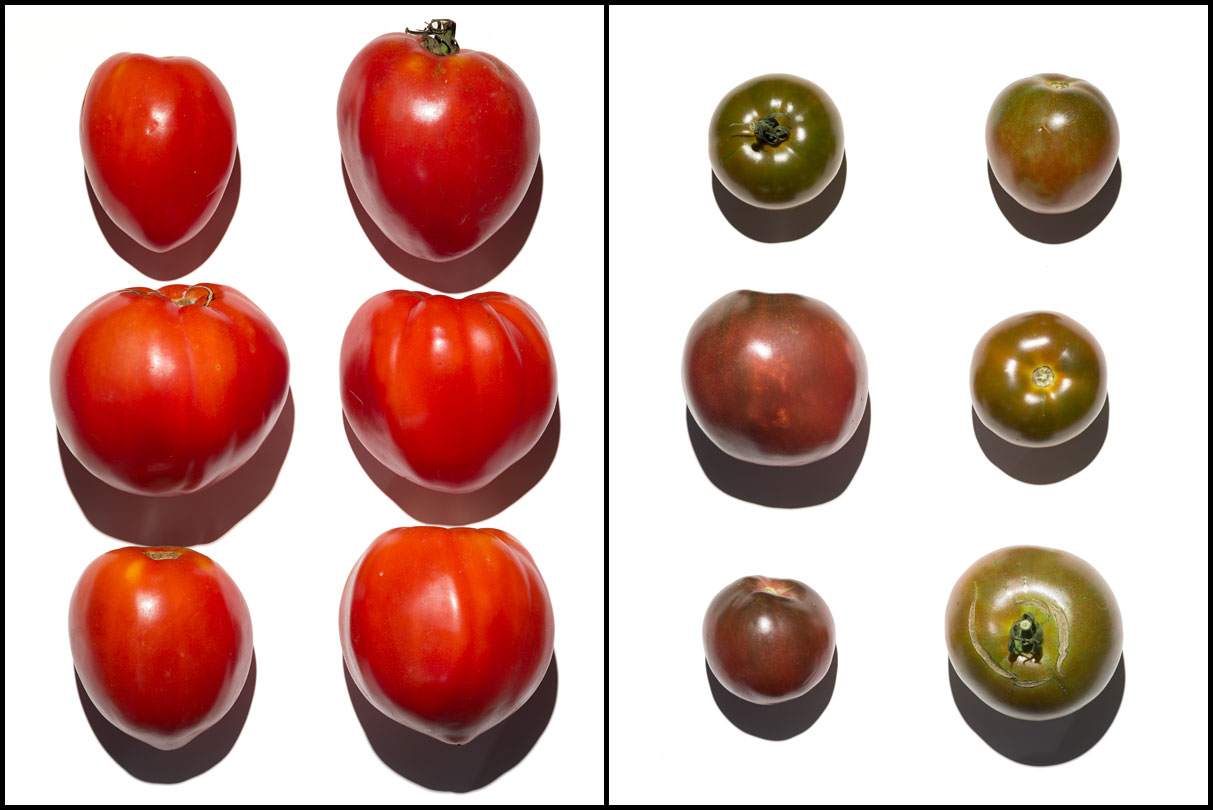 This year, we are growing two heirloom varieties that are new to us. The red fruit on the left are Amish Paste Tomatoes. As the name suggests, they are a great tomato for cooking and canning. Fresh, they are soft and sweet. The Black Prince is a rich tomato, great for salads. They are not large, but the plant yields a good crop. Click on the image for a larger view.
This year, we are growing two heirloom varieties that are new to us. The red fruit on the left are Amish Paste Tomatoes. As the name suggests, they are a great tomato for cooking and canning. Fresh, they are soft and sweet. The Black Prince is a rich tomato, great for salads. They are not large, but the plant yields a good crop. Click on the image for a larger view.
Tomato Glut
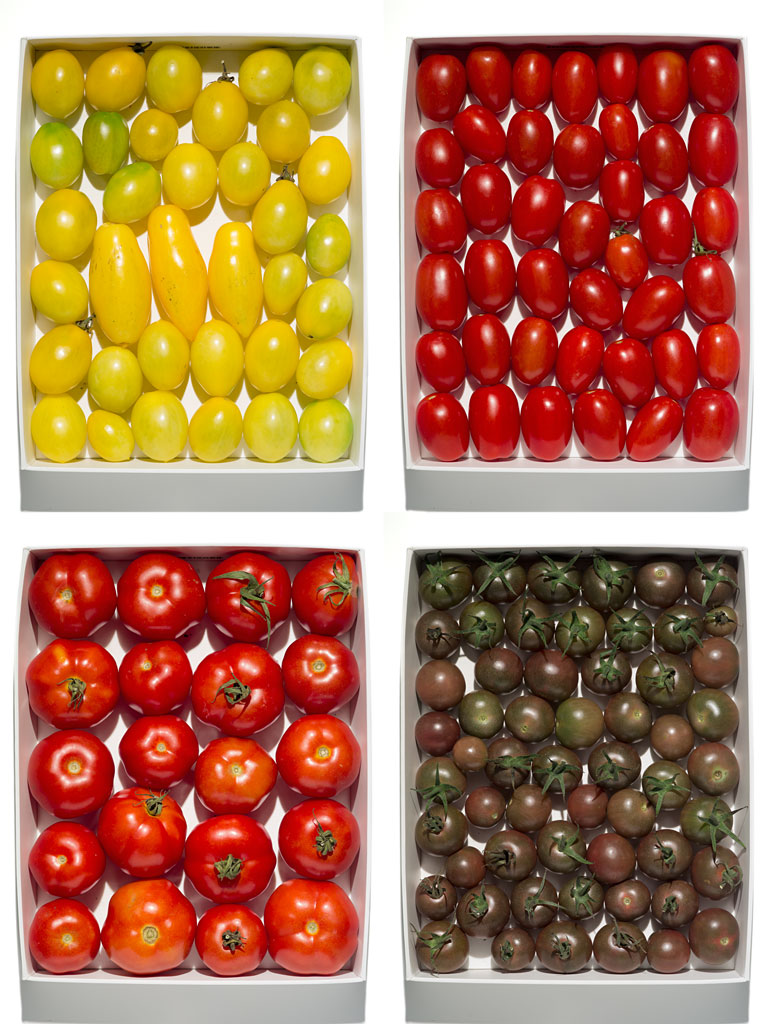 Our tomato harvest is starting to reached the late summer glut. It is wonderful thing to see the garden so productive, especially since we were starting these plants indoors in early spring.
Our tomato harvest is starting to reached the late summer glut. It is wonderful thing to see the garden so productive, especially since we were starting these plants indoors in early spring.
The yellows are Yellow Pear (smaller) and Yellow Banana Leg (the three long fruit). The top right red tomatoes are Juliet. The bottom left reds are Heather. And the bottom right is our favorite: Black Cherry. The yellow tomatoes and the Black Cherry are heirloom varieties. Click on the image for a larger view.
Tomato Harvest 2015
Blackberry Harvest 2015
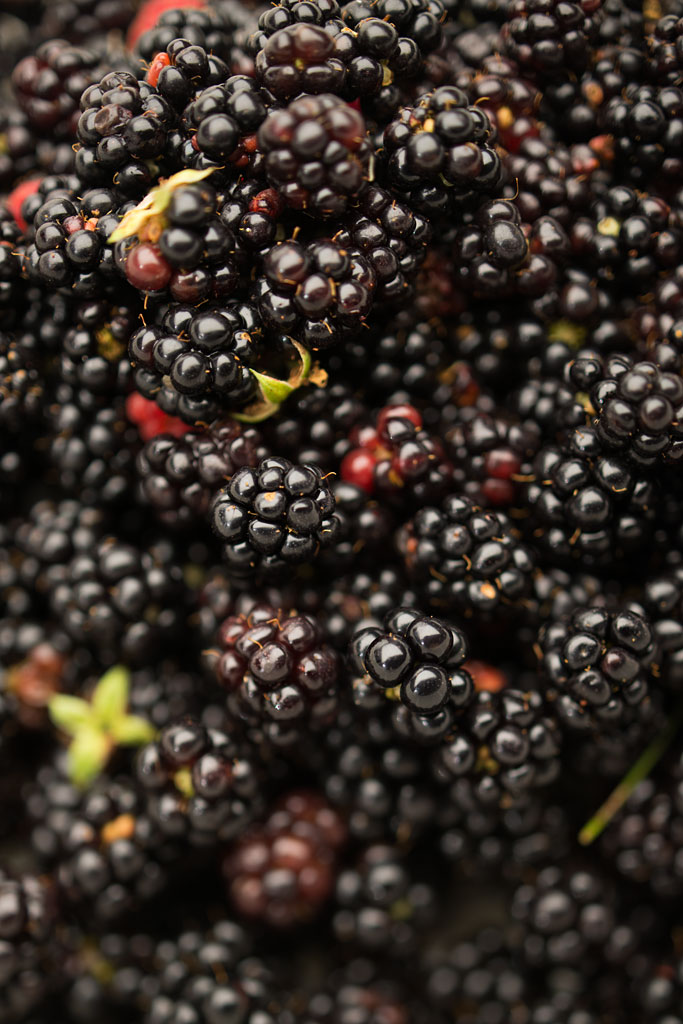 A month ago, our blackberries were green. This week, we began our annual harvest. This usually lasts about a month depending on the size of the crop. It looks like it might be a good year. Click on the image for a larger view.
A month ago, our blackberries were green. This week, we began our annual harvest. This usually lasts about a month depending on the size of the crop. It looks like it might be a good year. Click on the image for a larger view.
Queen Anne’s Lace—Edible Weeds
Raspberry Leaves
 Raspberry-leaf tea is great all year round. In summer, we mix it with mint or Japanese green tea and serve it cold. In winter, we mix it with camomile and drink it hot. Raspberry-leaf tea is claimed to have various medical benefits, particularly for women.
Raspberry-leaf tea is great all year round. In summer, we mix it with mint or Japanese green tea and serve it cold. In winter, we mix it with camomile and drink it hot. Raspberry-leaf tea is claimed to have various medical benefits, particularly for women.
In July, we harvest the new shoots of our wild raspberry. We air dry the leaves on the branches indoors, and finish by placing the leaves in a dehydrator. The tea is light and sweet. Wild raspberry spreads quickly and is considered a weed, but we value it as a herb and source of soft fruit. We have several varieties. Click on the image for a larger view.

